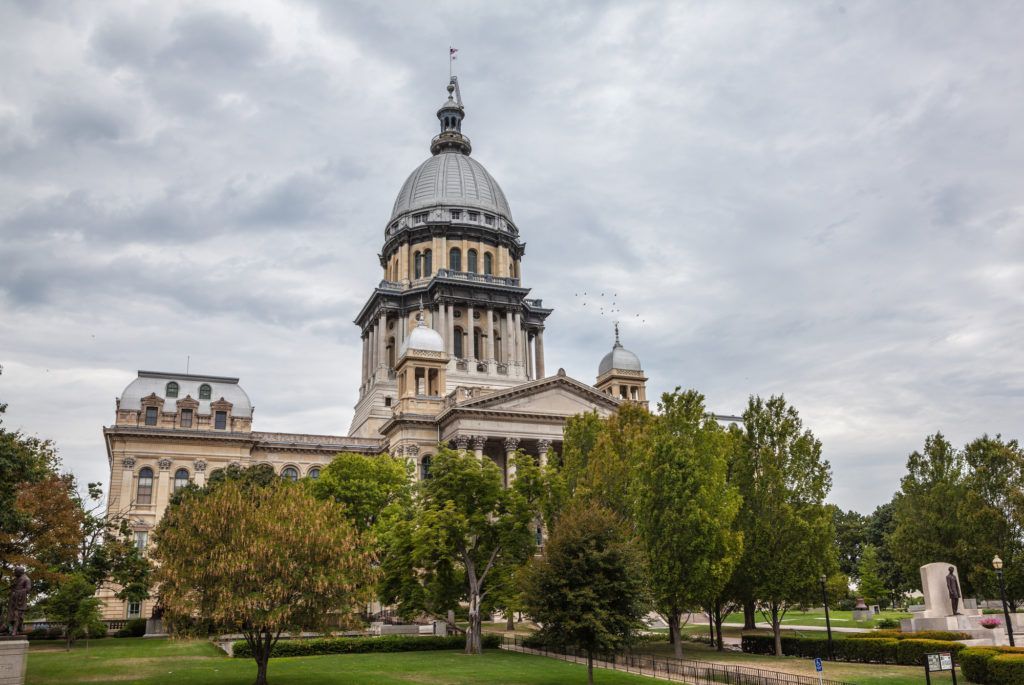
Illinois Has a "Tiff" with TIF
Property Tax Relief Task Force's Recent Draft Report Ignores TIF's Benefits and Avoids Tackling Larger Issues

After having been convened in the Summer of 2019 to explore ways the State Legislature could create “meaningful” change in the property tax bills homeowners around the state face each year, the Illinois Property Tax Relief Task Force (“Task Force”) issued its draft report (“Report”). The Task force, which was comprised of 88 members, held nearly three dozen hearings between August and December of last year.
It discussed, among other things, many current property tax exemptions which residential property owners may have with assessor’s offices. Because the dollar value of the of the exemption is deducted from the equalized assessed value of the property, exemptions typically shrink the tax base and increase the rates. The Report lists 11 exemptions but seemingly made just a few recommendations to address the issues of efficacy or continued viability.
Compared to the issue of exemptions, the Task Force took a more aggressive approach when discussing Tax Incremental Financing (“TIF”) and the potential effect it may have on property taxes. TIF districts are intended to incentivize economic development by generating money to support qualified public improvements in areas that otherwise lack resources. In short, and as described by the Illinois Department of Commerce,
"Illinois law allows units of local governments to designate areas within their jurisdiction as TIF districts. These districts dedicate sales tax revenues and additional property tax revenues generated within the TIF for improvements within the district to encourage new economic development and job creation. Funds may be used for costs associated with the development or redevelopment of property within the TIF, allowing blighted, declining and under-performing areas to again become viable, and allowing these areas to compete with vacant land at the edge of urban areas."
Projects in TIF districts typically include:
- Redevelopment of substandard, obsolete, blighted or vacant buildings,
- Financing public infrastructure improvements, including streets, sewer, water, in declining areas,
- Cleaning up polluted areas,
- Improving the viability of downtown business districts; rehabilitating historic properties, and
- Providing infrastructure needed to develop a site for new industrial or commercial use.
Most often, improving these areas requires a public investment to reduce the extra cost and risk faced by private developers. TIF has been generally successful in Illinois and 48 other states to meet economic development challenges by allowing local governments to make the improvements they need, like new roads or sewers, and provide incentives to attract new businesses or help existing businesses stay and expand without tapping into general municipal revenues or raising taxes. These jobs and investment help a community meet its other needs.
Without ample discussion of the clear benefits of TIF, the Report states that TIFs “have been cited for creating several problems” and conclusively states that they reduce funds available to other units of local governments without mentioning that, but for TIF, equalized assessed values in longstanding depressed properties would not increase. The Report unfairly states that TIF can require additional or different local public services without mentioning the fact that local governments typically require the payment of impact fees, building permit fees, inspection fees, and other fees to avoid strain on public budgets.
While it is true that some TIFs have been unsuccessful, the Report fails to mention the benefits that most of the 1,405 TIF districts in the state (as of 2016) usually provide for a community in need of redevelopment. In fact, it is only with a qualified TIF that many developers will decide to develop in a community in the first place. According to 2018 Illinois TIF Reform Task Force report, TIF districts with a positive TIF increment totaled 1,304 in 2016 representing just over $14.2 billion in TIF increment. Finally, with a broad stroke the Report again takes a swipe at TIFs by claiming that it may be “hoarding money that would otherwise go to local government for little or no apparent public purpose.”
Seemingly, without providing an explanation the Task Force then suggests 1) reducing the life of a TIF by half from 23 years to 10-15 years, 2) incorporating objective standards when determining whether an area qualifies as “blighted,” and 3) enacting legislation establishing full disclosure of the impact on taxes for any referendum to increase property taxes on residents. While these recommendations may at first sound reasonable, more detail is required to better understand them. Requiring objective data to qualify a TIF redevelopment area as “blighted” may inhibit future growth opportunities. Moreover, requiring greater transparency in the context of a referendum to increase property taxes does not seemingly relate to TIF districts per se.Most alarmingly, reducing the life of a TIF from 23 to 10-15 years will dissuade developers and perhaps local governments from improving long standing areas in need of improvement because the municipalities will not be able to fully reimburse the developer its upfront funds during that time. Local governments typically want to issue bonds for the 23 years so that they can fully repay bond holders who purchased the bonds from the municipalities for the qualified improvements without putting an unnecessary strain on their budgets.
In all, the Task Force’s recommendation with respect to TIF districts need to be re-examined and reevaluated before being seriously considered by the State Legislature.

CONTACT US TODAY
Contact Us
We will get back to you as soon as possible.
Please try again later.
LOCATION
570 Lake Cook Road, Unit 119
Deerfield, IL 60015
Shapiro & Associates Law | All Rights Reserved |
Created by Olive + Ash.
Managed by Olive Street Design.









